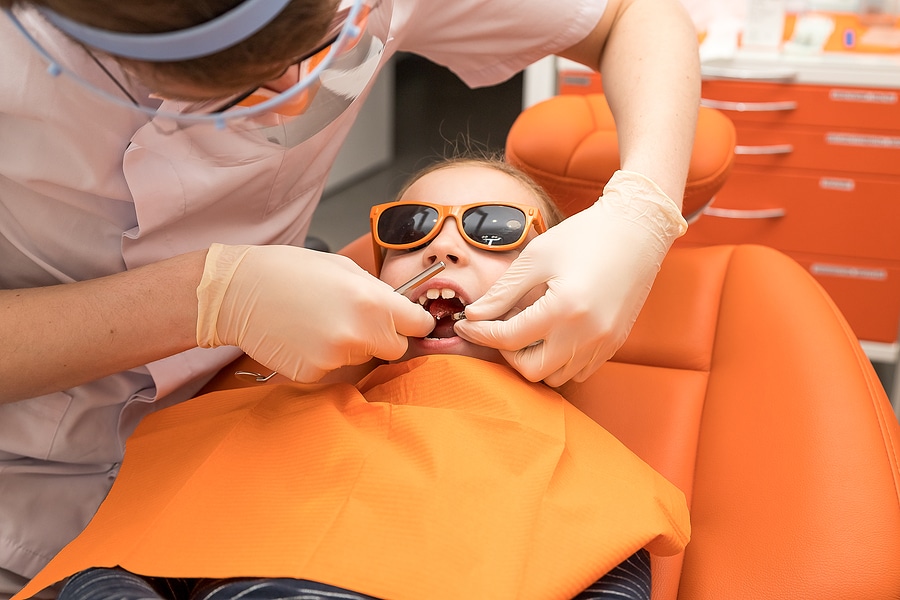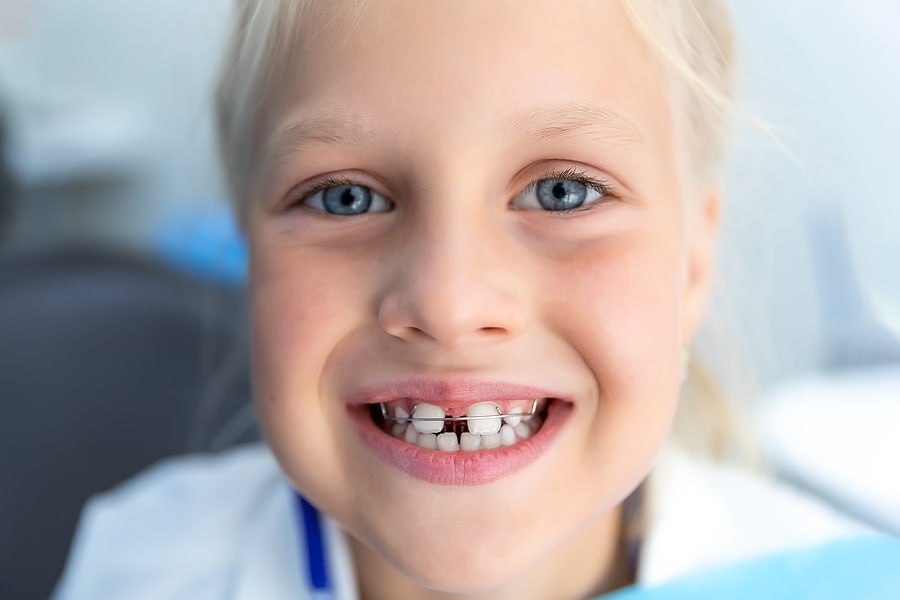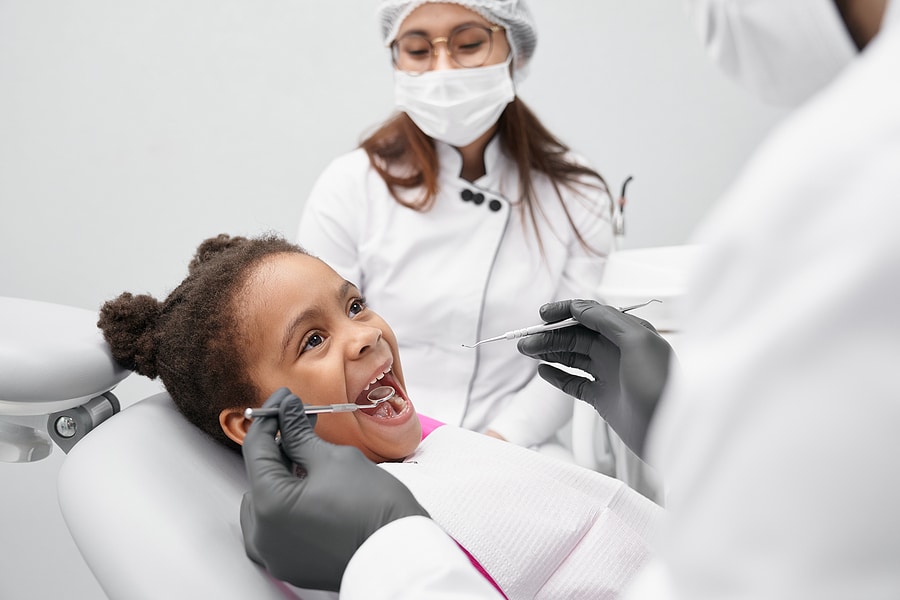Why Your Child Should Have Two-Phase Orthodontic Treatment
Early orthodontic intervention is gaining traction like never before. Addressing dental issues in two distinct phases can set the stage for healthier permanent teeth and enhance overall oral health in pediatric patients. More commonly known as “two-phase treatment,” this proactive method plays a crucial role in promoting better oral health and teeth and bite alignment that can positively impact your child’s smile and confidence. By starting treatment at the right time, orthodontists in Winter Haven, FL, can guide the jaw and teeth into their proper positions, reducing the risk of more severe problems in the future
What is two-phase orthodontic treatment?

Two-phase orthodontic treatment involves a proactive approach to address dental issues, particularly in pediatric patients, aiming for optimal teeth alignment. The treatment process comprises two distinct stages:
Phase 1: Early intervention (interceptive orthodontics) focuses on identifying and addressing potential problems at an early age, often before all permanent teeth have erupted. It aims to create a better foundation for permanent teeth, correct bite problems, and guide jaw growth for optimal results in Phase 2.
Phase 2: Comprehensive orthodontic treatment entails more definitive corrective measures, typically using braces or aligners, to achieve the desired final alignment. This phase aims to achieve the ideal teeth alignment, ensuring a functional and aesthetically pleasing smile for the long term.
Benefits of Two-Phase Orthodontic Treatment
A. Early Address of Developmental Issues
Two-phase treatment allows for the identification and timely correction of developmental dental issues at an early age, promoting optimal oral development.
B. Establishing a strong foundation
By addressing concerns in Phase 1, a solid foundation is laid for the eruption of permanent teeth, ensuring a healthier and more stable dental structure.
C. Proactive correction of bite problems and alignment
The early intervention of Phase 1 helps correct bite problems and alignment issues, mitigating potential complications later on and improving overall oral function.
D. Reduced need for invasive procedures
By intervening early, two-phase treatment can minimize the need for more invasive and extensive dental procedures in the future, leading to a smoother treatment process.
E. Enhanced Facial Aesthetics and Confidence
Improved teeth alignment and a harmonious smile resulting from two-phase treatment can boost a child’s facial aesthetics and contribute to increased self-confidence and a positive self-image.
When is the right time for two-phase treatment?
The recommended age for Phase 1 treatment is typically around 7 to 9 years old. This is when a child’s mouth is still developing, and some permanent teeth have emerged. Early evaluation as part of Phase 1 enables orthodontists to detect and address emerging dental issues promptly. This helps prevent problems from escalating and leads to more favourable treatment outcomes.
Two-phase treatment offers a flexible and individualized approach, allowing orthodontists to tailor the treatment plan to each child’s unique dental needs, ensuring the best possible results.
What to expect during phase 1: Early Intervention

- Crowding: Crowding occurs when there is insufficient space in the mouth for permanent teeth to grow and align properly. Addressing crowding early can create adequate space for the eruption of permanent teeth. This reduces the likelihood of more complex issues later on.
- Crossbite: A crossbite is a misalignment of the upper and lower teeth when biting down. Early intervention can help correct crossbites, preventing potential jaw issues and improving the overall bite function.
- Thumb sucking or other oral habits: Prolonged thumb sucking or other oral habits can lead to dental and jaw misalignments. Phase 1 treatment aims to break such habits and encourage proper oral development.
- Protruding front teeth: Protruding front teeth can impact both aesthetics and function, making children more susceptible to injuries. Early intervention can guide the proper positioning of these teeth, enhancing facial harmony and reducing the risk of accidents.
Appliances and Patient Compliance
During Phase 1, orthodontists may employ various treatment modalities tailored to each child’s specific needs. These may include:
- Space Maintainers: These appliances help preserve the space left by prematurely lost baby teeth. By maintaining adequate space, they ensure that permanent teeth have enough room to erupt properly, preventing crowding issues.
- Habit-Breaking Appliances: Designed to curb oral habits like thumb sucking or tongue thrusting, habit-breaking appliances encourage healthier oral development and prevent potential dental misalignments.
- Palatal Expanders: Palatal expanders widen the upper jaw’s arch to address crossbites and create enough space for permanent teeth to emerge in proper alignment.
- Nance Appliance: The Nance appliance prevents the shifting of molars, maintaining their positions while other dental issues are addressed during Phase 1 treatment.
- Lingual Arch: Lingual arch appliances maintain space in the lower jaw and prevent crowding as the permanent teeth start to grow.
- Bite Plates: Bite plates help correct deep bite issues by altering the contact between the upper and lower teeth, improving the bite relationship.
- Headgear: Headgear may be used in cases where growth modification is necessary. It aims to guide the development of the jaws and improve the bite.
- Removable Retainers: After resolving certain dental issues, orthodontists may provide removable retainers to maintain the achieved corrections and prevent relapse.
- Crossbite Correctors: These appliances address crossbite issues, ensuring that upper and lower teeth fit together correctly during biting and chewing.
Throughout Phase 1, patient compliance plays a pivotal role in the treatment’s success. Following the prescribed treatment plan, including wearing appliances as directed and attending regular follow-up appointments, is essential to achieve the desired outcomes.
Transitioning to phase 2: comprehensive orthodontic treatment
After completing Phase 1, there is typically a waiting period during which the orthodontist monitors the child’s dental development. This allows them to assess how the teeth and jaws are growing. The orthodontist can also determine the appropriate timing for initiating Phase 2 treatment.
In Phase 2, the focus shifts to comprehensive orthodontic treatment, aiming to achieve the desired final alignment and bite correction. This stage is geared towards refining tooth positions and ensuring a harmonious bite for improved oral function and aesthetics.
Braces , Aligners, Or Appliances
To achieve precise teeth movement and the best possible results, orthodontists may recommend braces, clear aligners, or other suitable appliances during Phase 2. These appliances work effectively to guide teeth into their optimal positions and achieve a beautiful and functional smile. These may include:
- Braces: Traditional braces consist of metal brackets bonded to the teeth, connected by arch wires that apply gentle pressure to move the teeth into their correct positions.
- Ceramic Braces: Similar to traditional braces, ceramic braces use tooth-colored or clear brackets. This makes them less noticeable and more aesthetically appealing.
- Lingual Braces: Lingual braces are custom-made to fit on the back (lingual) surfaces of the teeth. Their placement makes them discreet and virtually invisible from the front view.
- Clear Aligners: Clear aligners, like Invisalign, are a series of custom-made, removable trays that gradually move the teeth to the desired alignment. They are virtually invisible and offer greater flexibility during treatment.
- Herbst Appliance: The Herbst appliance is used to correct severe overbite or underbite issues. It promotes the forward growth of the lower jaw.
- Retainers: After completing the active phase of orthodontic treatment, patients are typically given retainers to maintain the achieved tooth alignment and prevent relapse.
- Elastics (Rubber Bands): Elastics are used in conjunction with braces or aligners to correct bite issues and align the upper and lower teeth properly.
- Temporary Anchorage Devices (TADs): TADs are small screws or implants temporarily placed in the jawbone to provide additional anchorage for precise tooth movement.
Overall, the two-phase orthodontic treatment approach offers numerous benefits. Early intervention can pave the way for healthier permanent teeth, enhanced oral function, and increased self-confidence for your child. By addressing dental issues proactively, parents can ensure their child’s dental well-being and set the stage for a lifetime of optimal oral health.
Schedule a two-phase treatment at Cornejo Orthodontics

We understand the uniqueness of each patient’s needs. Our team aims to create the amazing, beautiful smile and healthy teeth you’ve always desired. Schedule a consultation today and take the first step towards a confident and radiant smile!

